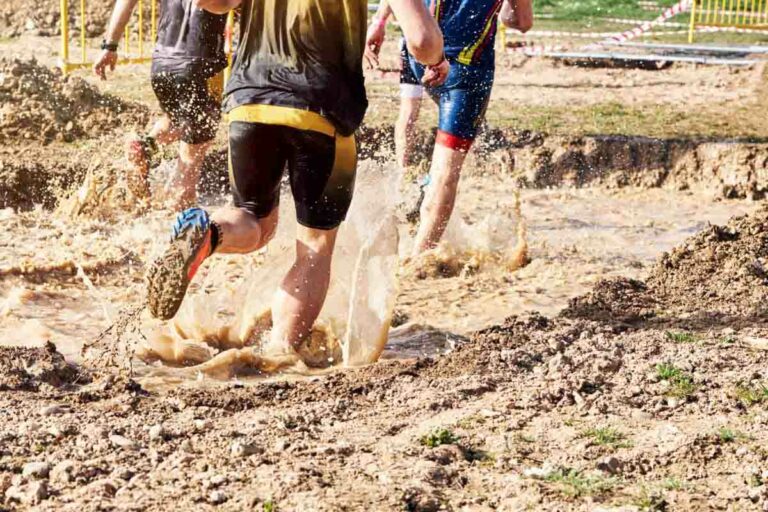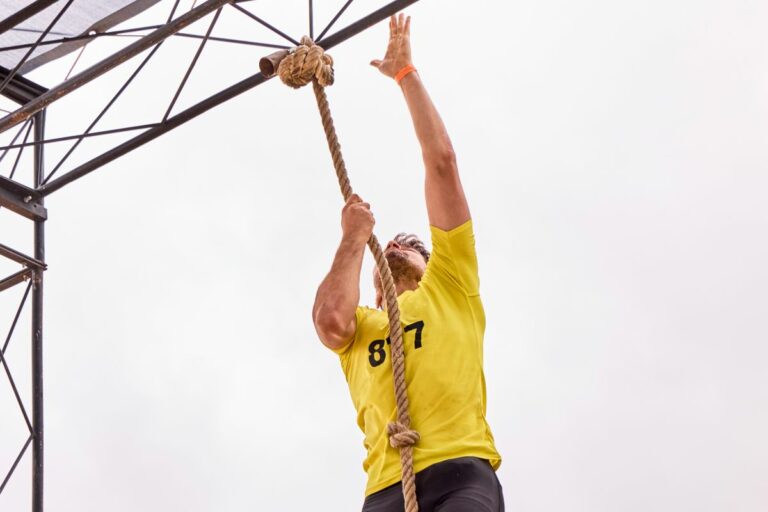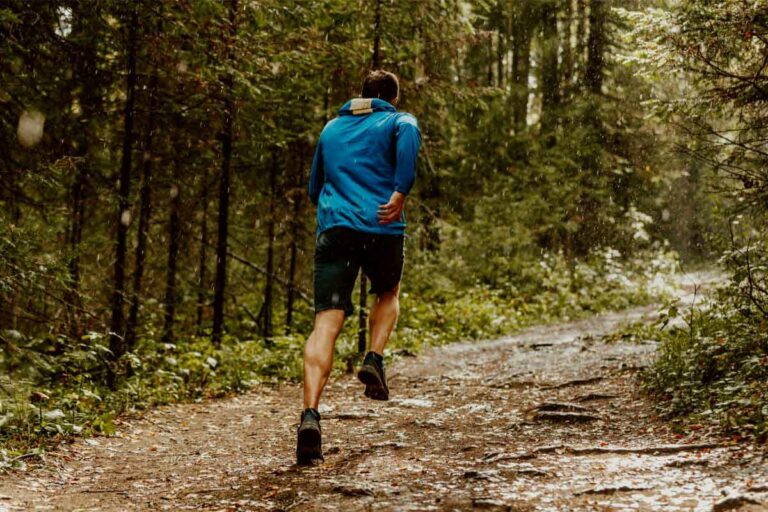Spartan Race Tips – Obstacle Weights And Info

So you’re thinking of competing in the spartan race? Good for you! The spartan race is a great way to challenge yourself both physically and mentally, as you exercise your agility and endurance.
But before you start training, it is essential that you do your research first.
Knowing as much as possible about the race is the key to your success. You must be prepared to research the obstacles you’re facing, as well as plan your training schedule to yield the best possible results.
Below, we take a look at some of the best ways you can prepare yourself ahead of the big race.
What Kind Of Obstacles Are In The Spartan Race?
Obstacles distinguish Spartan Races from other running races. There are 20 to 60 obstacles integrated depending on what Spartan event we are talking about. Obstacles vary from event to event.
- Climbing obstacles (such as 12-16 foot long ropes)
- Carrying (such as carrying sandbags or carrying and gripping heavy buckets)
- Gripping (like hanging in monkey bars)
- Crawling (such as crawling under barbed wire)
- Skill (such as spear throws)
- Cardio (for example, box jumps)
The failure to complete an obstacle results in a penalty (burpees or a penalty loop) that must be completed before continuing the race.
How Long Should You Train Ahead Of A Spartan Race?
This is probably the first thing you should consider when preparing to participate in the spartan race.
Presuming that you already attend the gym fairly regularly and are in pretty good shape, you should probably prepare for around one month before the race.
If you really want to make sure you’re adequately prepared, three months is ideal.
Make Sure Your Endurance Is Good
Obstacle races generally tend to be only around 20% obstacles, the rest is running, which accounts for about 80% of the challenge.
Cardio will be a massive part of your experience when competing in a spartan race.
You have to make sure that your endurance is sufficient. If you intend on beating other contestants, you have to be fast.
Make sure that you partake in a regular running program ahead of the competition.
Typically, it is recommended that you train for a half marathon or a marathon because this will reflect the distance you will be required to run in the race.
When you are training, make sure that you are running on different kinds of terrain, because in the competition, you will be running through fields full of mud.
Strength Training

It is important to note that many of the weights you will be expected to carry will take a measurable level of strength.
This will mean building your upper body strength to be able to lift these objects.
Below are some of the obstacles faced in the competition.
Sandbags
The sand weights used in the spartan race include both pancakes and bags.
Sandbags have more to offer in terms of strength training than barbells or dumbbells. This is because they offer a more dynamic form of resistance.
The majority of people report they can lift 40-50% less using a sandbag than they can using a barbell.
- The sandbag pancakes in the spartan race require men to be able to lift 40lbs and women 30lbs.
- The regular bags require men to lift 45lbs and women 35lbs.
This is quite a significant amount, so training with sandbags ahead of the competition will be integral.

Bucket And Log Carrying
This is another form of strength that is tested in the competition. Self-explanatory in nature, you must carry both a bucket and a log in the competition.
You might be lucky and get a log that doesn’t weigh a great deal, as they don’t weigh these in the race, instead just cutting them into equal sections.
- The buckets weigh a whopping 70-100lbs for men and 50-80lbs for women.
- Although the logs aren’t weighed, you can expect them to be anywhere from 30+ lbs for men and 20+ lbs for women.
Sled Pulling
This exercise will test your strength levels in new ways during the race.
Sled pulling is an important part of the competition, so you must make sure to partake in these exercises in the gym beforehand.
When performing a sled pull, you are engaging several DIFFERENT muscles simultaneously, including your quads, glutes, hamstrings, calf muscles, and lower back.
It is a great way to build your strength not only for this exercise but other forms of strength training involved in the competition.
- Men are expected to be able to pull two 45-pound bags, whereas women are expected to pull one 45-pound bag.
Tire Flip
Tire flipping is another component featured in the race. For this obstacle, it is recommended that you get a good GRIP on the tire.
Find an area of the tire that has a gap and get your fingers solidly underneath the space between the tire and the ground. Some people even dig out some room for their fingers in the dirt before lifting.
- Male competitors are expected to flip a 400lb tire and women 200lbs.
Atlas Stone
Some people may not be familiar with atlas stones. They are essentially heavy spherical stones commonly used in lifting challenges. They can prove difficult to lift as they don’t have any handles to GRAB onto.
The best tip when tackling this obstacle is to find a stone that is chewed up. Chewed-up stones will be naturally lighter and give you a better grip.
- Men are expected to lift approximately 75-100lbs and women are expected to lift 50-70lbs.
Herc Hoist
This herculean task requires you to pull a weight using a ROPE. You must anchor yourself to the ground, grab onto the rope with both of your hands, and start pulling.
The first pull will be the hardest. Make sure to use all of your body weight to get things moving and choose a rope that isn’t muddy and worn, these will be harder to pull.
- Men are required to pull 105lbs and women are required to pull 75lbs.
The Bottom Line
The last and best tip we can give you is to simply have a good time. When things get tough on the course, just keep the promise of the finish line at the forefront of your mind.
The sense of accomplishment you will feel at the end will be immense. Oh yeah!
Make sure you practice those BURPEES too. Failed obstacles will be penalized by 30 burpees before moving on to the next challenge.






